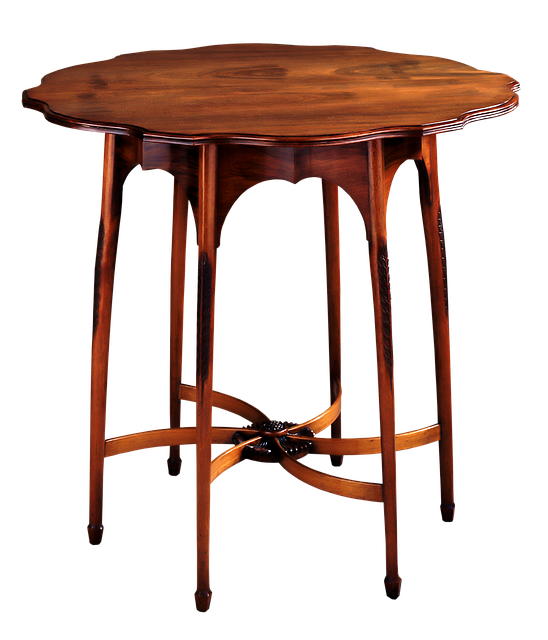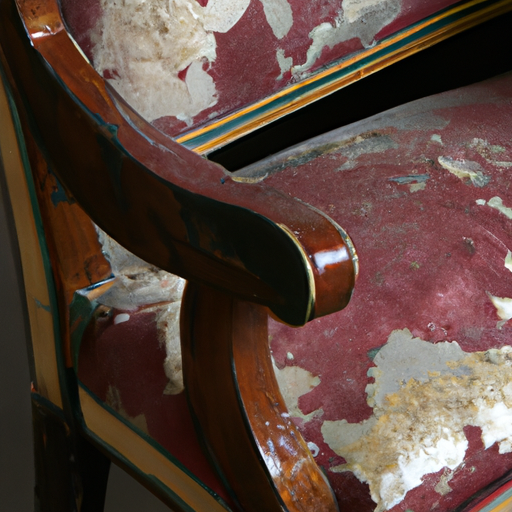This guide provides invaluable advice on how to clean and maintain antique furniture, ensuring their preservation for future generations. It covers a variety of techniques, materials, and precautions to take, all aimed at enhancing the lifespan and beauty of your prized possessions.
"Why is Regular Cleaning of Antique Furniture Important?"
Regular cleaning of antique furniture is essential for its preservation and longevity. Neglecting to clean antique furniture can result in the buildup of dirt, dust, and grime, which can deteriorate the quality of the wood and other materials over time. Additionally, regular cleaning helps to maintain the aesthetic appeal of the furniture, as dirt and stains can detract from its beauty.
- 1. Preserving the Integrity:
Dust and dirt particles can settle into the crevices of antique furniture, causing abrasion and scratching of the surfaces. Regular cleaning helps to prevent this accumulation, preserving the integrity of the piece and preventing unnecessary wear and tear. - 2. Preventing Pest Infestation:
Antique furniture is often susceptible to pest infestation, including wood-boring beetles and termites. Regular cleaning allows you to inspect the furniture for any signs of pest activity, such as holes or frass (sawdust-like residue). Prompt identification and treatment can help prevent further damage to the furniture. - 3. Maintaining the Value:
Properly cleaned and well-maintained antique furniture retains its value over time. Regular cleaning not only helps to preserve the physical condition of the piece, but it also demonstrates that the furniture has been cared for and respected. This can be particularly important if you plan to sell or pass down the furniture in the future.
"A picture showing the adverse effects of neglecting regular cleaning of antique furniture"
"What Materials are Safe to Use?"
When it comes to cleaning antique furniture, it's important to use materials that are safe and gentle to avoid damaging the delicate surfaces. Here are some recommended materials to use:
- 1. Soft Cloths:
Soft, lint-free cloths are an excellent choice for dusting and general cleaning of antique furniture. Avoid using rough or abrasive materials that can scratch or damage the surface. Microfiber cloths are particularly effective in capturing dust particles without causing any harm. - 2. Mild Detergent:
In some cases, a gentle cleaning solution may be needed to remove dirt or stains from the furniture's surface. A mild detergent, such as dish soap or a specialized wood cleaner, can be used. Dilute the detergent in water and apply it sparingly to the cloth, ensuring it is not too wet. Always test the solution on a small, inconspicuous area first to ensure it does not cause any adverse reactions. - 3. Natural Oils:
For polishing and nourishing the wood, natural oils such as beeswax or mineral oil can be used. These oils help to restore the luster and shine of the wood without causing any damage. Apply a small amount of oil to a clean cloth and gently rub it into the wood in the direction of the grain. Be sure to remove any excess oil to prevent a sticky residue.It's important to note that harsh chemicals, abrasive cleaners, and strong solvents should be avoided as they can strip away the finish or cause discoloration. Additionally, avoid using excessive water or liquid on the furniture, as this can cause warping or swelling of the wood.
"Do's and Don'ts: A Guide to Cleaning Techniques"
When cleaning antique furniture, it's essential to follow a few do's and don'ts to ensure the preservation of its value and beauty. Here are some key guidelines to keep in mind:
- 1. Do Dust Regularly:
Dusting your antique furniture on a regular basis helps prevent the buildup of dirt and debris. Use a soft cloth or a feather duster to gently remove dust from the surface. Avoid using dusting sprays or polishes as they can leave residue or damage the finish. - 2. Don't Use Excessive Force:
When cleaning, avoid scrubbing vigorously or applying excessive pressure. This can scratch or damage the delicate surfaces of the furniture. Instead, use gentle, circular motions to clean and polish.3. Do Protect with Coasters and Mats:
To prevent damage from spills and heat, always use coasters, placemats, or protective pads when placing objects on your antique furniture. This helps to avoid water rings, scratches, and burns that can be difficult to repair. - 4. Don't Overexpose to Sunlight:
Direct sunlight can fade and discolor antique furniture over time. Avoid placing your furniture in areas where it is exposed to prolonged sunlight. If necessary, use curtains or blinds to filter the sunlight and protect the wood.5. Do Seek Professional Help if Needed:
If you encounter stubborn stains, extensive damage, or if you are unsure about the best cleaning method for your antique furniture, it's best to consult with a professional. They can provide expert advice and assistance to ensure the proper care and preservation of your valuable pieces.
"An illustrated guide to correct and incorrect cleaning techniques"
"Spot Cleaning Vs. Full Cleaning: Which is Right for Your Piece?"
Determining whether spot cleaning or full cleaning is appropriate for your antique furniture depends on several factors. Here are some considerations to help you make the right decision:
- 1. Assess the Condition:
Examine the overall condition of your furniture. If it has minor stains, spills, or localized dirt, spot cleaning may be sufficient. However, if the piece is heavily soiled, sticky, or has a layer of grime, a full cleaning may be necessary. - 2. Evaluate the Material:
Different materials require different cleaning methods. For delicate or sensitive surfaces, spot cleaning is generally safer and less likely to cause damage. Full cleaning may be suitable for sturdier materials, but caution should always be exercised to avoid any potential harm. - 3. Test Before Proceeding:
Before applying any cleaning solution to your antique furniture, perform a spot test in an inconspicuous area. This helps ensure that the cleaning agent does not react negatively with the finish or material. If any adverse effects occur, it is best to consult a professional. - 4. Time and Effort:
Spot cleaning is a quick and focused approach that targets specific areas, making it ideal for regular maintenance. On the other hand, full cleaning requires more time, effort, and attention to detail. Consider your availability and the level of cleaning required when deciding which method to use. - 5. Value and Rarity:
If your antique furniture holds significant historical or monetary value, it is advisable to seek professional guidance for full cleaning. They will have the expertise to handle valuable pieces delicately and ensure their preservation.
Tips for Cleaning Antique Furniture:
| Step | Material | Precautions | Frequency |
|---|---|---|---|
| Dust gently | Soft cloth | Do not use feather dusters | Weekly |
| Clean with a wood cleaner or polish | Wood cleaner or polish | Do not use abrasive cleaners | Monthly |
| Scrub with a soft brush | Soft brush and wood cleaner | Do not use hard bristles | Annually |
| Treat with wax or oil | Wax or oil | Do not use too much oil | Once every 1-2 years |
Cleaning antique furniture can be a rewarding and enriching experience, helping maintain a tangible connection to the past. Always remember to approach each piece with respect and caution, ensuring that your actions enhance, not detract from, its value and charm.



